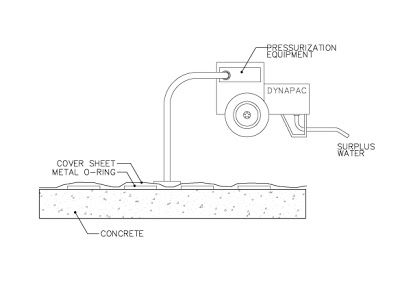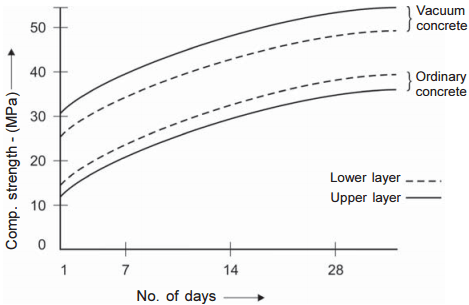What is Vacuum Concrete?
All the water used in mixing concrete is not required for hydration. Therefore, removal of excess water before hardening take place improves concrete strength.
Vacuum concrete is the type of concrete in which the excess water is removed for improving concrete strength. The water is removed by use of vacuum mats connected to a vacuum pump.

Procedure
In the usual manner, a concrete mix with good workability is pace in the form-works. As fresh concrete contains continues the system of water-filled channels, the application of a vacuum to the surface concrete results in a large amount of a vacuum to the surface of the concrete. This results in a large amount of water being extracted from a certain depth of the concrete. The vacuum is applied through porous mats connected to a vacuum pump. The final water cement ratio before setting is thus reduced and as this ration largely controls the strength, vacuum concrete has a higher strength and also density a lower permeability and a greater durability.

Advantages of Vacuum Concrete
Vacuum Concrete has several advantages over normal concrete. Some of the advantages are given below. {adselite}
- The final strength of concrete is increased by about 25%.
- Sufficient decrease in The permeability of concrete is sufficiently decreased.
- Vacuum concrete stiffens very rapidly so that the form-works can be removed within 30 minutes of casting even on columns of 20 ft. high.
- This is of considerable economic value, particularly in a precast factory as the forms can be reused at frequent intervals.
- The bond strength of vacuum concrete is about 20% higher.
- The density of vacuum concrete is higher.
- The surface of vacuum concrete is entirely free from pitting and the uppermost 1/16 inch is highly resistant to abrasion. These characteristics are of special importance in the construction of concrete structures which are to be in contact with flowing water at a high velocity.
- It bonds well to old concrete and can, therefore, be used for resurfacing road slabs and other repair works.

References:
- A text Book of Engineering Materials by Dr. M.A. Aziz

